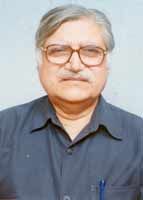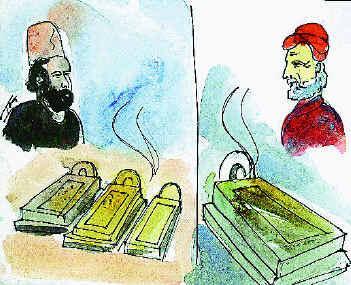Amroha, UTTAR PRADESH / NEW DELHI :
Noted physician and nephrologist Dr SNA RIZVI has been conferred the DRA Distinguished Service Award for the year 2003 by Delhi Rheumatology Association of India. The award has been conferred on Dr Rizvi in recognition of his contributions in the field of Rheumatology. Born in 1935 in Amroha, Moradabad district of Uttar Pradesh, Dr Rizvi obtained his MBBS and MD degrees with gold medals from Maulana Azad Medical College, New Delhi. Later he served the college for 30 years and retired in 1997 as Director, Professor and Head of the Department of Medicine and Nephrology. Dr Rizvi is the recipient of 24 Gold Medals and 10 Honorary Fellowships besides wining 13 national and international awards. At present he is a Senior Consultant Physician Nephrologist at Apollo Hospitals and Sanjeevan Medical Research Centre.
MUHAMMAD ADNAN HASHMI, a class XI student of Iltifat Rasool Intermediate College, Sandela, Hardoi, Uttar Pradesh has been given Presidential Medal. Hashmi was earlier given a medal by the Governor of Uttar Pradesh. Besides studying, Adnan Hashmi has made public service his motto in life. Congratulations Adnan!
Senior journalist SAEED NAQVI was conferred the National Integration Award 2003, instituted by the National Commission for Minorities in New Delhi on December 18. The award was conferred on Naqvi for his outstanding contribution towards promoting communal harmony and national integrity. The function, which also marked the Minorities Rights Day, was attended by Tarlochan Singh, chairman of the National Commission for Minorities, Dr MS Usmani, vice-chairman of NCM, MP and Journalist Kuldip Nayar and others. A seminar on how to improve communal harmony was also organised on this occasion.
MUHAMMAD KHALIL, editor of Science Ki Duniya (Urdu) has been presented Sir Syed National Award, Iswa Honour of Science Society for his services to science and literature and Whitkar Science Award for popular scientific literature. These awards have been conferred on Khalil for his outstanding services to scientific literature. Earlier too he has been conferred awards on national and international levels. An Urdu science magazine, Science Ki Dunya is being published under National Institute of Science Communication and Information Resources for the last 27 years.
The 15th annual award distribution function of Maulana Muhammad Ali Jauhar Academy was held at Ghalib Academy, New Delhi on December 10. Chief guest, former Vice Chancellor of Aligarh Muslim University, Hamid Ansari presented the Maulana Muhammad Ali Jauhar Awards 2003. Recipients of the awards includedMAUALANA AHMAD MUSTAFA SIDDIQUI RAHI (Urdu journalism), KAMAL YUSUF MALIK, Uttar Pradesh state minister (national politics), RAJA SYED MUZAFFAR ALI, filmmaker (academic services), DR GHULAM NABI WANI (social services) and DR VIBHUTI NARAIN RAI, IG (social services). Speakers shed light on different aspects of Maulana Muhammad Ali Jauhar’s life. A souvenir of the Academy was released by MP, Shahid Siddiqui.
source: http://www.milligazette.com / The Milli Gazette / Home / January 01-15, 2004











